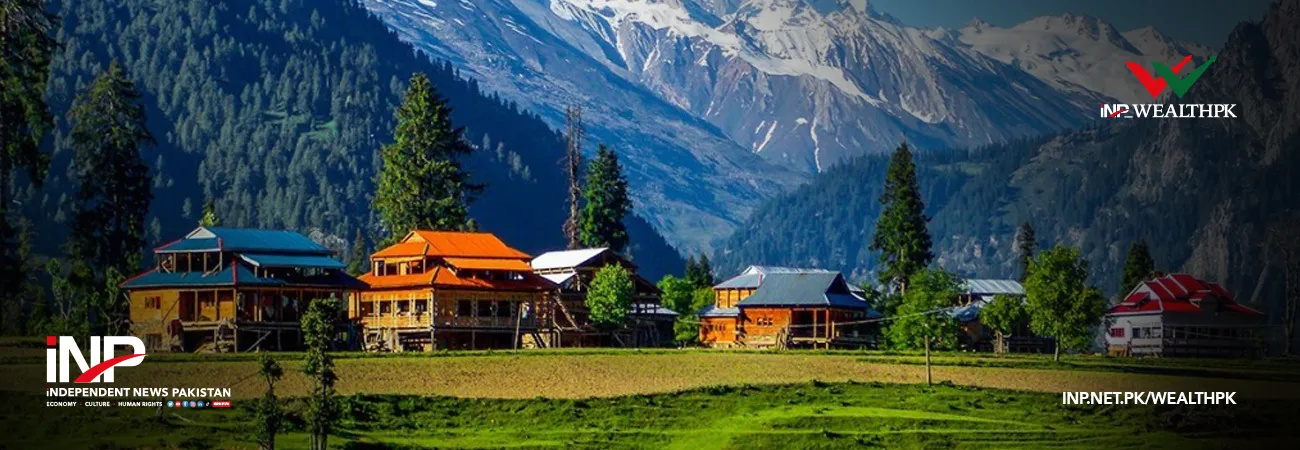INP-WealthPk
Faiza Tehseen
Jojoba plantation needs to be promoted in Pakistan to help counter desertification and land degradation.

“Jojoba plantation will provide a sustainable solution to protecting marginal lands and generating incomes for the relevant communities,” says Dr Riffat Tahira, programme leader of National Medicinal, Aromatic and Herbs Programme of Pakistan Agricultural Research Council (PARC). Talking to WealthPK, she said: “Jojoba is a highly valuable product, mainly cultivated for oil production, conservation and landscaping. The main purpose of planting it in deserts is to stop desertification and erosion. It is disease and drought-resistant naturally and needs less water to grow. The 15-25m-long tap root with substantial parallel lateral and secondary roots, and stiff and hard leaves of jojoba enable it to grow in arid regions.”
Tahira said that jojoba was a dioecious plant but can be propagated through tissue culture, direct seeding, stem cutting, air layering, root cutting, and micro propagation. “Oil content in jojoba seeds is usually more than 60%. After oil extraction, its seed hull can be used as a pesticide, fertilizer and soil replenisher. Its oil is widely used in the cosmetic industry.” She said, “Jojoba is an evergreen, perennial shrub with an average lifespan of more than 100 years. It is a small multi-stemmed tree or a perennial woody shrub varying in height from 0.5m to 6m. It usually grows to a height of 2m to 3.5m.
After 9-10 years, the plant reaches proper maturity but starts fruiting at the age of three to four years. Per acre 750 jojoba plants at the distance of four to five feet and row tow distance at 12 to 13 feet is recommended as a standard.” The PARC scientist said that the successful jojoba cultivation needed 18-22 inches water. “It is mainly a desert and arid climate plant, highly resistant to drought and heat. It can bear temperature ranging from -7⁰C to 50⁰C. Jojoba can grow in areas having as little as 6-10 inches of rain annually, but it can also be grown in areas with high rainfall.”
Tahira said, “The desert areas in Pakistan – Cholistan, Thal, and Thar – are ideal for jojoba cultivation. Other favourable areas are Bahawalpur, Layyah, Bhakkar and Mianwali.” She said a decade ago, jojoba was largely cultivated in Pakistan, especially South Punjab. “Despite the high yield, farmers could not obtain income from it. The main cause was less selling scope in the local market and no marketing at the international level.” The agricultural scientist called for a coordinated approach involving relevant government departments, private sector, research institutes and international partners for the promotion of jojoba cultivation in Pakistan.
“To promote jojoba, government should frame a comprehensive strategy, launch public awareness and finance the processing facilities and supply chains,” she suggested. Talking to WealthPK, Muhammad Aatif Majeed, Deputy Director (Technical) at Pakistan Forest Institute (PFI), Peshawar, said, “To rehabilitate the degraded lands in Pakistan, jojoba (scientifically called simmondsia chinensis) is ideal for cultivation. “Its deep-rooted system reduces erosion, stabilises the soil, and enhances groundwater recharge.
Its seeds produce oil like a liquid wax, which is highly demanding for cosmetics, pharmaceuticals, and lubricant industries globally.” He said desertification was a significant challenge in Pakistan. “Over 80% (about 70% arid and about 15% semi-arid) land in the country is classified as arid or semi-arid, leaving it highly vulnerable to soil erosion, reduced agricultural productivity, and loss of biodiversity. Sindh, Balochistan and parts of Punjab are being impacted by the climate change crisis due to rapid urbanisation and deforestation.”
Majeed said, “Jojoba cultivation in Pakistan will not only address the climate challenges but will help generate opportunities for a sustainable income. Jojoba cultivation is especially important for areas where traditional farming is no longer feasible. Proper marketing strategy will attract the investors as well. Investing in this resilient crop will revive the degraded lands and also pave the way for a sustainable green future.”
Credit: INP-WealthPk













